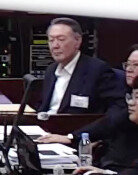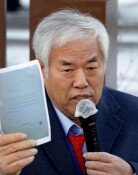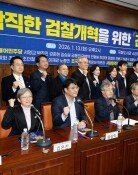US, Canada, Mexico agree to build a supply chain outside of Asia
US, Canada, Mexico agree to build a supply chain outside of Asia
Posted January. 13, 2023 07:48,
Updated January. 13, 2023 07:48
The leaders of the three countries, the United States, Canada, and Mexico, agreed on Tuesday to strengthen the foundation of key industries such as semiconductors and electric vehicle batteries in North America. In particular, they decided to build a semiconductor cluster in North America to reorganize the semiconductor supply chain, which is heavily dependent on Asian countries such as South Korea and Taiwan. It means that production facilities in key areas will be moved from Asia to North America to contain China, which has committed to ‘rise up of its semiconductors.' U.S. President Joe Biden said, “We need to strengthen the semiconductor supply chain so that no one can stop us.”
Amid the supply chain alliance signed by the U.S. government with neighbors to get out of Asia, Apple is also expediting to reduce its reliance on Korean components. According to the U.S. media, Apple will develop its display and use it in phases, starting with the Apple Watch at the end of next year at the earliest, followed by the iPhone and iPad. Domestic companies such as Samsung Display and LG Display, which have supplied displays to Apple, are expected to suffer a blow. Apple's announcement was a great shock to the two companies responsible for about 90% of the latest iPhone models.
In the organic light emitting diode (OLED) field, a future growth engine, competition with China is fierce. The Korean display industry, which has been leading the industry for 10 years, has already lost its No. 1 position in global sales last year due to the Chinese low-end large-volume offensive. The domestic market share of Korean companies in the electric vehicle battery market is falling behind Chinese companies. South Korea's key industries have fallen behind in competition little by little due to Chinese companies, and now they have to worry about the 'churn and containment' of the United States, which is reorganizing its supply chain centering on its own country.
The problem is that Washington’s move is not temporary or fragmented. In the United States, political parties, the government, and companies are working together to strengthen the competitiveness of “Made in America” to revive its manufacturing industry. The “de-Asia” and “de-Korea” movement in the U.S. is highly likely to spread to other products beyond semiconductors and displays. For its part, China is nurturing high-tech industries by pouring huge subsidies.
Due to the increasingly strong nationalism, it is difficult for global companies such as Samsung and LG to surmount such treacherous waters alone. Recently, the government decided to increase the tax deduction rate to 15% for large companies' investment in facilities such as semiconductors and batteries and to provide additional deductions for the increase in investment. However, these approaches are only the least measures for the Korean economy to survive global competition. More drastic support and regulatory reform for strategic industries are needed to prevent Korean companies from being left behind in the global competition. The National Assembly should also actively legislate through bipartisan efforts to support “Made in Korea.”



![[속보]국힘 윤리위, 한동훈 제명 결정…장동혁호 ‘뺄셈 정치’ 가나](https://dimg.donga.com/c/138/175/90/1/wps/NEWS/IMAGE/2026/01/14/133151701.1.jpg)



